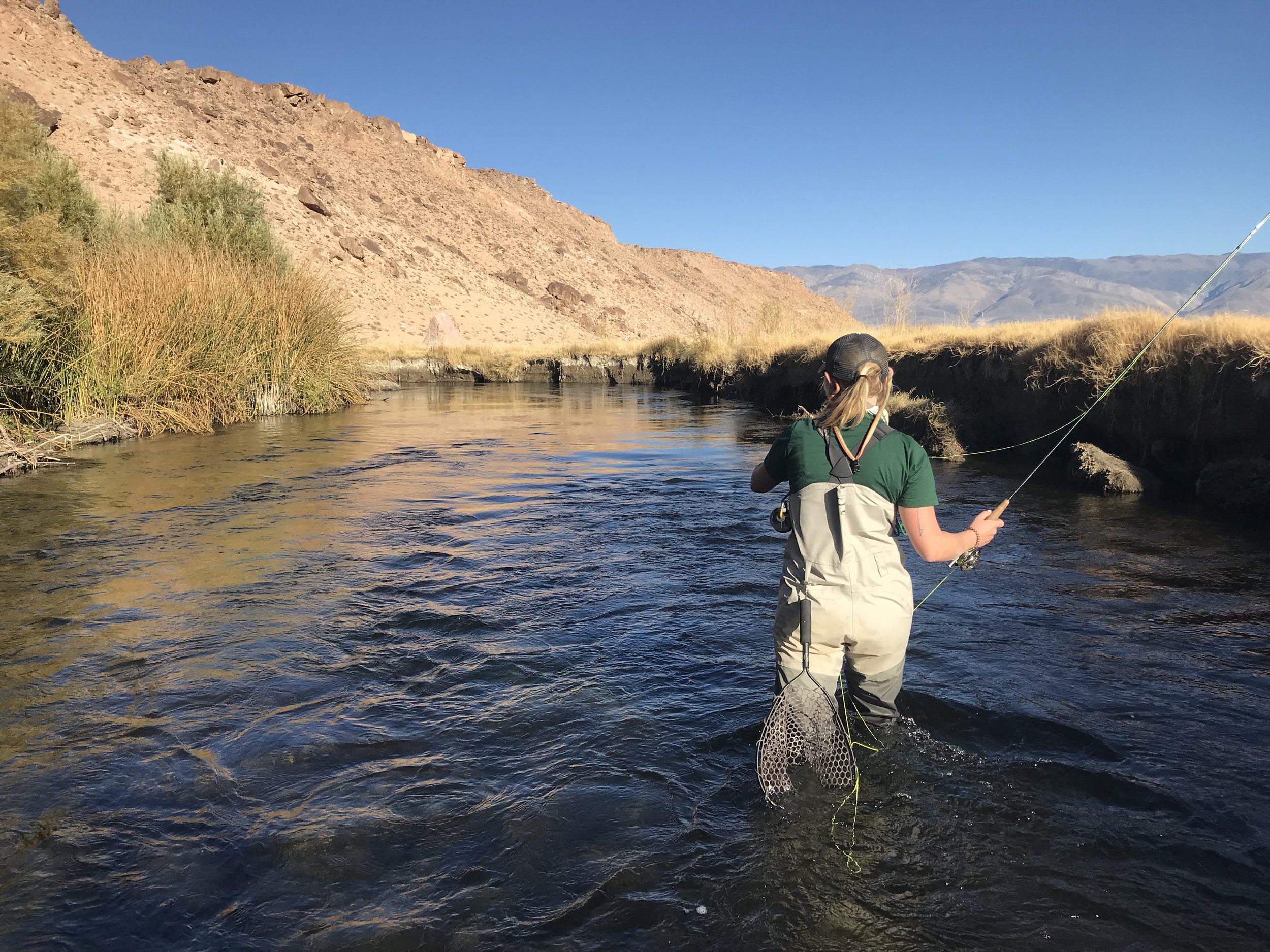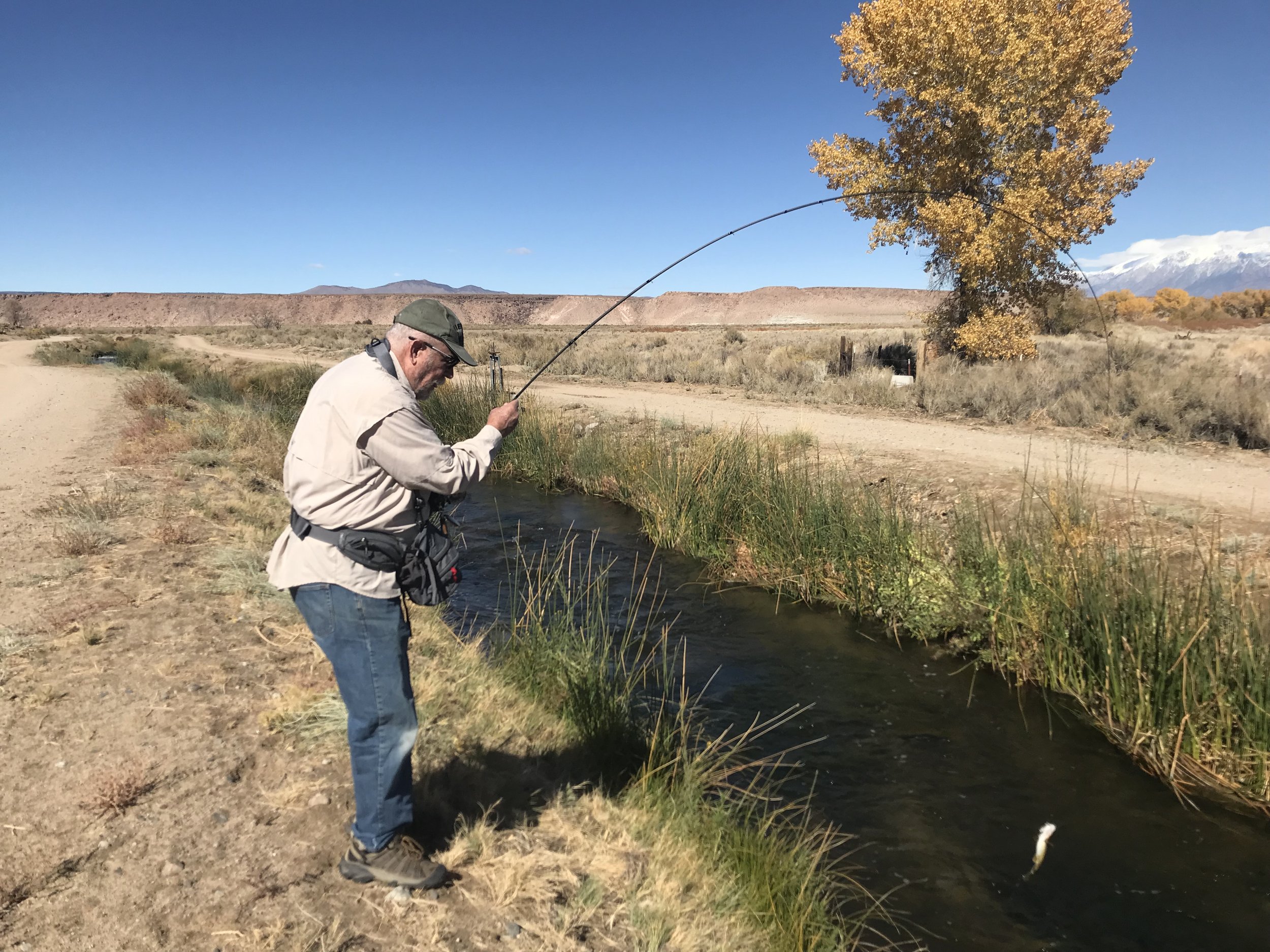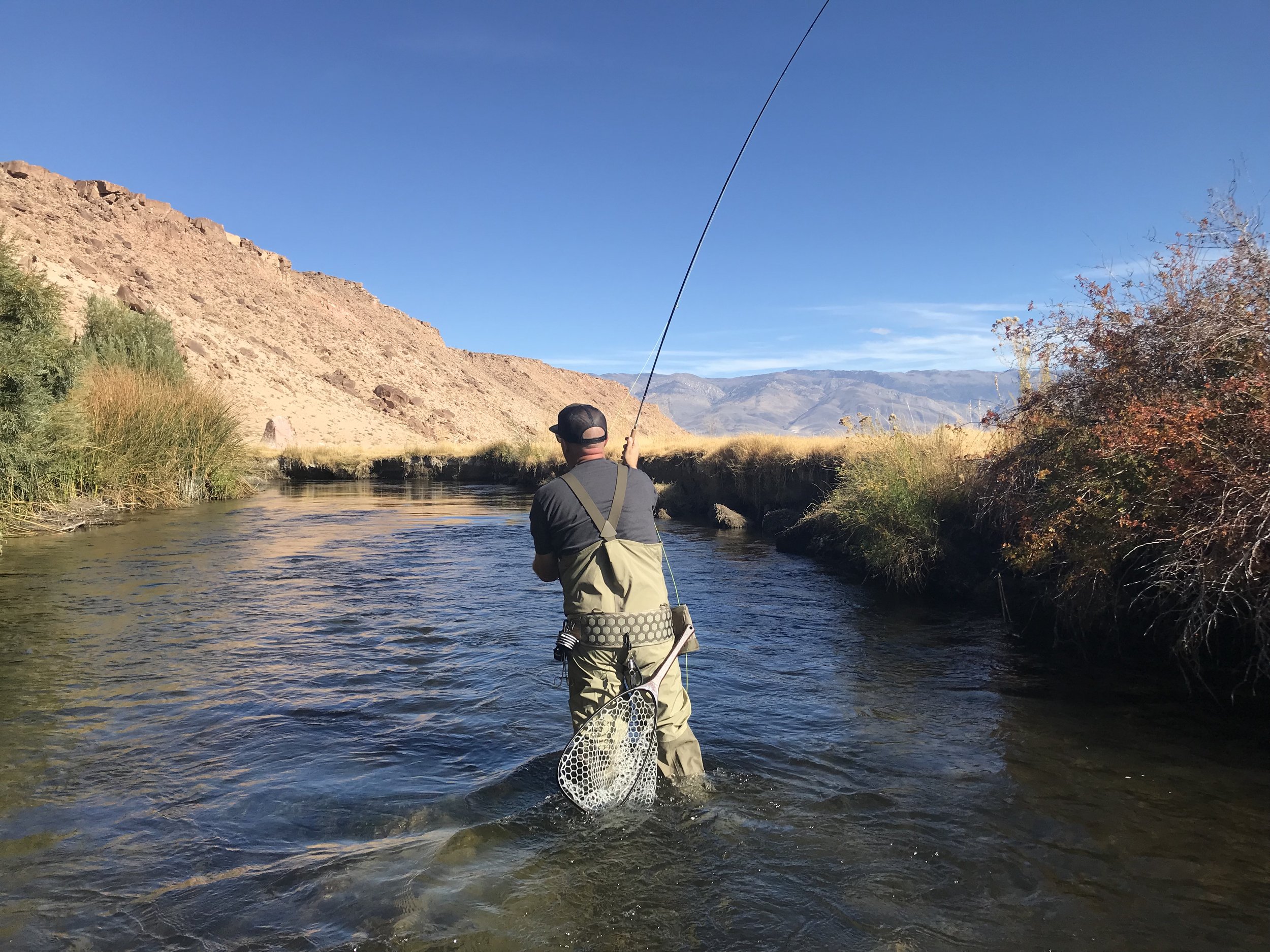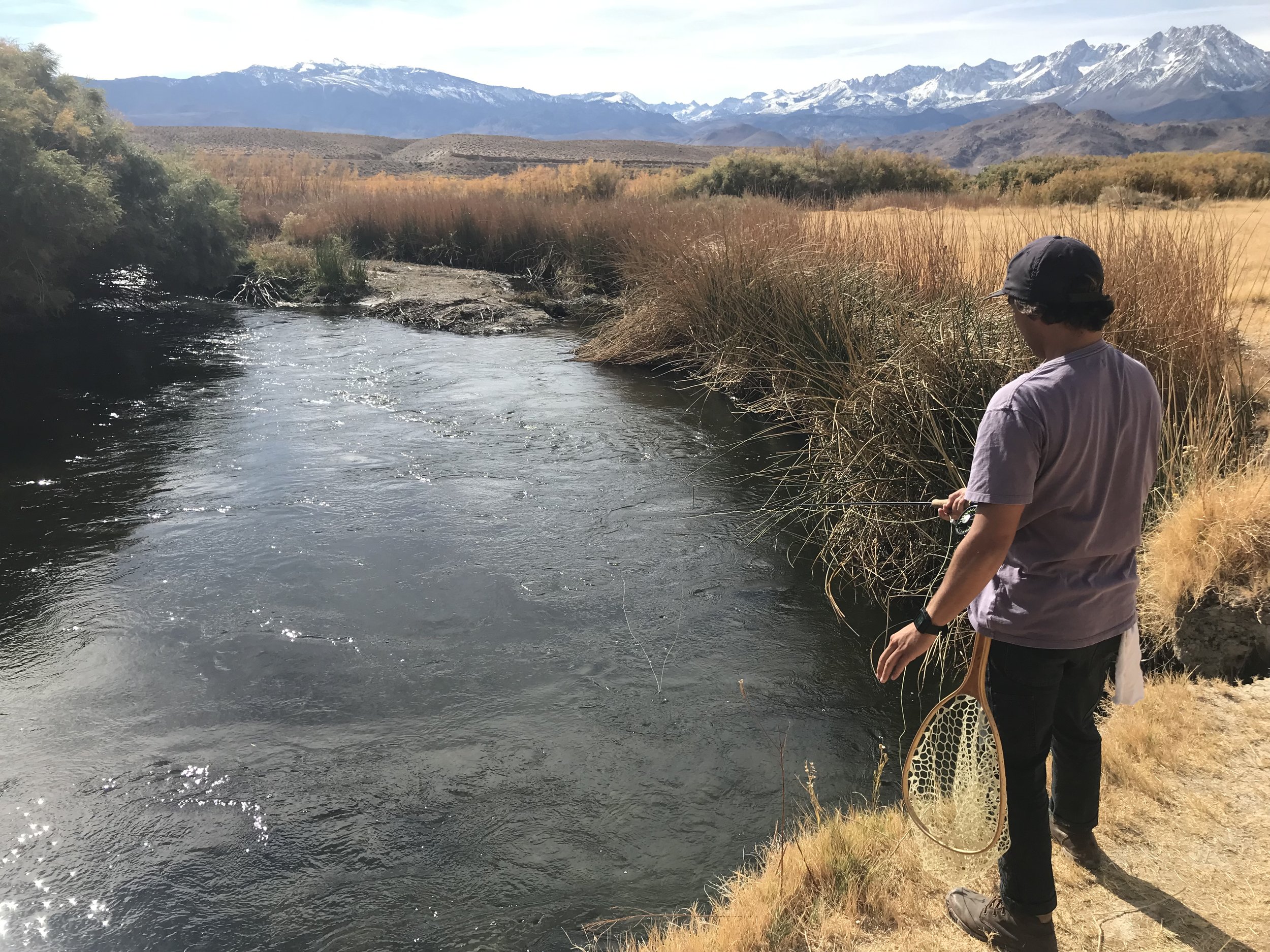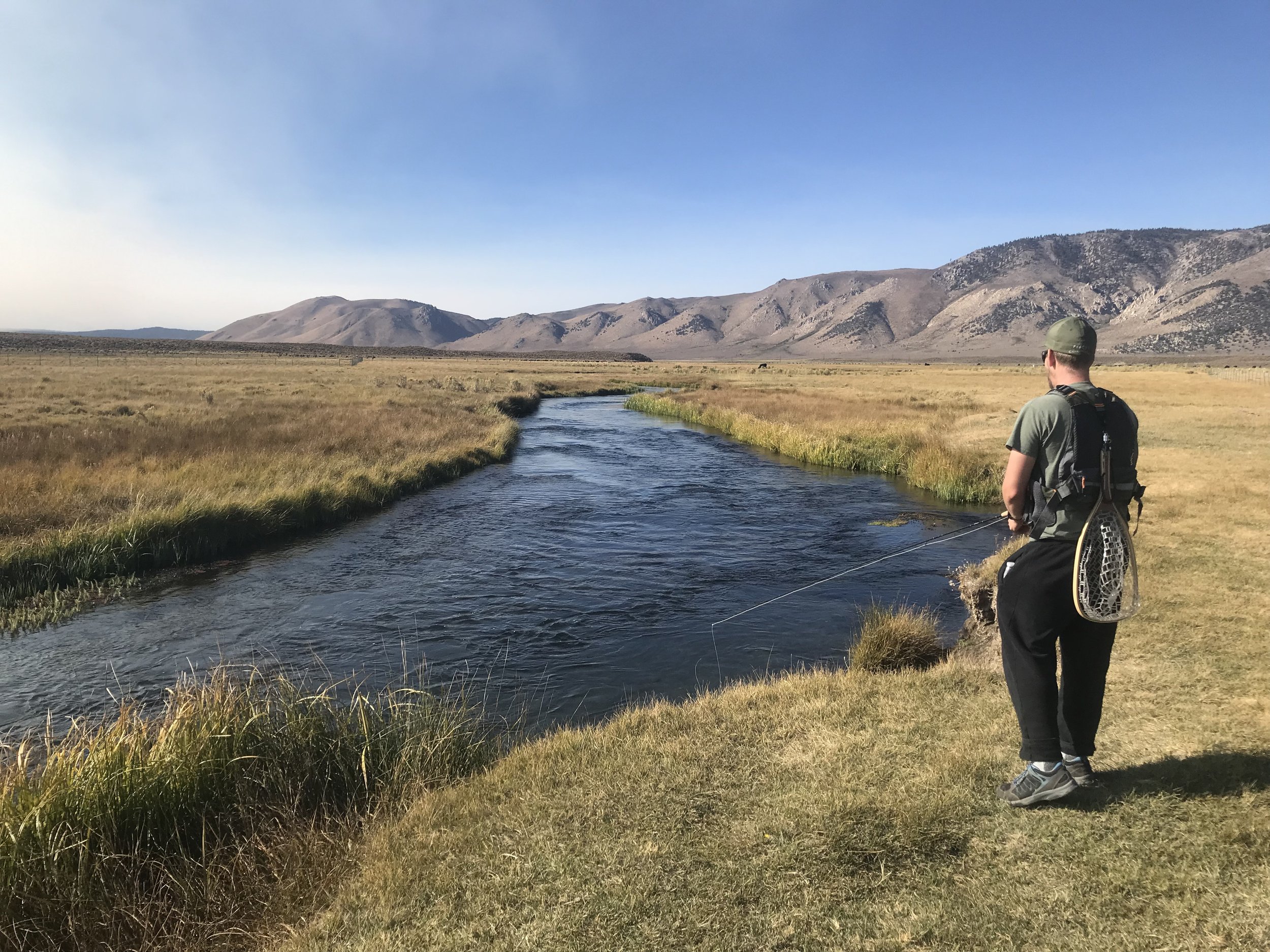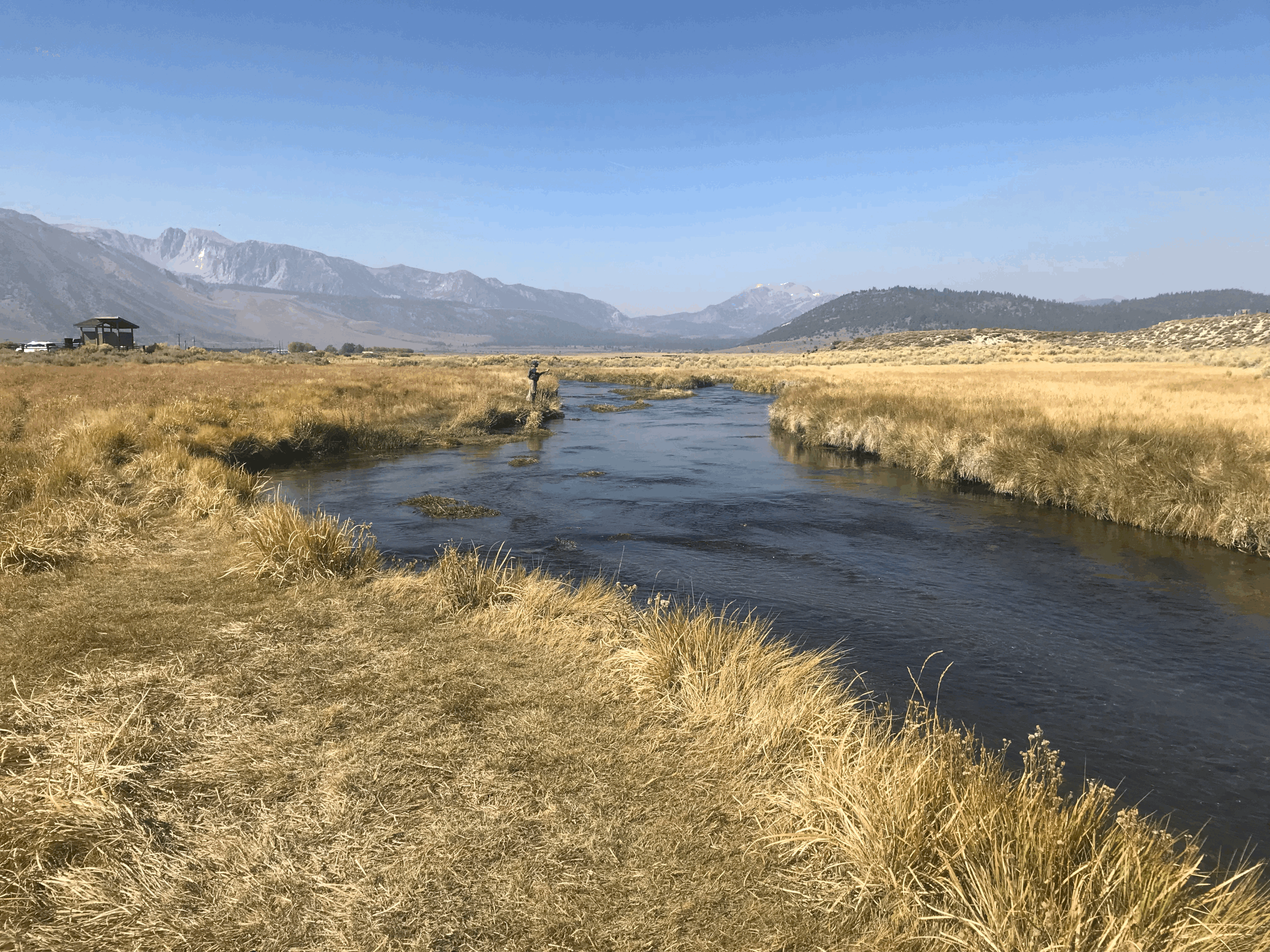Warm days with caddis and mayfly hatches makes this a great time to come to the Eastern Sierra fly fishing. Mid-day temperatures are in the mid 70’s making it hot. Mid-day hatches of blue wing olive mayflies and caddis are creating enough activity to keep the trout rising and feeding on nymphs. It’s December and I’m fishing in a T-shirt complaining it’s too hot out for this time of year. Most of the moving waters in Eastern Sierra are open to catch and release fishing with barbless lures or flies. These waters offer all kinds of fly fish opportunities with little to no fly fishing pressure. As always be sure to consult with California Fish and Wildlife regulations for the water you plan on fly fishing. https://wildlife.ca.gov/Regulations.
Elise Minichiello from Ventura enjoying an unseasonably warm afternoon fly fishing in the Eastern Sierra.
Lower Owens River:
Wild Trout Section:
Low flows, warm days, an abundance of hatching mayflies and caddis makes the lower Owens River my top choice of Eastern Sierra waters to fly fish. A mid-day blue wing olive hatch has the wild brown trout on the bite. Before and during the hatch nymphing is producing good numbers of wild trout. If you’re in the right spot during the hatch the trout are coming to the surface to take the hatching mayflies. Size 20 blue wing olive parachutes, comparaduns and sparkle duns are good imitations of the hatching mayflies. Before, during, and after the hatch I’m nymphing with a Euro nymph rig or under an indicator with a size 18 olive quilldigon, size 18 thread Frenchie, and a size 20 bead head flash back pheasant tail nymph. The sporadic caddis hatch has been producing fish when I fish elk hair caddis and X-caddis in size 20.
Fly fishers wanting to fish dry flies during the blue wing olive mayfly hatch need to search out those pockets that have trout feeding on the surface.
Hot Creek:
Interpretive Site:
It’s winter hatch time for Hot Creek. Sporadic hatches of mayflies and caddis offer surface action for fly fishers that are on the creek on the right day. Most consistent fly fishing is nymphing with mayfly nymphs and midge nymphs. A size 20 bead head flashback pheasant tail nymph is my go to pattern for imitating mayfly nymphs in Hot Creek. There are a multitude of midge nymphs that produce in the creek. Tiger midges, zebra midges, soft hackle brassies, secret midges, and blood midges in sizes 18 to 22 all produce trout for me.
Hot Creek is in winter mode without its blanket of snow.
Hot Creek:
Canyon Section:
With winter approaching the weed beds in Hot Creek Canyon are slowly disappearing. This is opening up channels and pools that can be nymph fished with a dry and dropper or an indicator. With the low levels in the creek I’m running the nymph about 18 to 24 inches below the fly or indicator. I like using a size 16 Adams parachute as my dry fly. The trout will occasionally take this fly even though the bulk of my takes come on the nymph. For nymphs I’m fishing olive quilldigons, thread Frenchies, bead head flash back pheasant tail nymphs, and midge nymphs. I bring along the size 18 and 20 blue wing olive dry flies and a few size 20 gray midges for those days when there is a hatch and the trout will be feeding on the surface.
Upper Owens River:
Above Benton Crossing Bridge:
The upper Owens River is completely accessible as there is no snow or mud from rain on the roads to inhibit fly fishers from accessing the Owens River from Benton Crossing to Longyears. Fly fishers looking for trophy trout, size 18 or bigger rainbows and browns, migrating up from Crowley Lake are finding it tough fly fishing. For the fly fisher dragging nymphs and streamers in the deep pools and runs and covering miles of river to find those few holes that have trophy trout inhabiting them, they are catching a few fish. Fishing bigger nymphs, size 10 or 12, dredged right on the bottom is what is producing trout. I’m fishing with stoner nymphs, green/gold Prince nymphs, gold ribbed hare’s ears, and Rainbow Warriors. For the few fly fishers wanting to streamer fish the river, fish with standard streamers like wooly buggers, matukas, marabou muddlers, and hornbergs. There is a small group of fly fishers looking for that once in a life time trout that are throwing what I classify as supper streamers. Things like game changers, sex dungeons, baby gonga, dirty hippy, and the boogie man. These flies produce best right at the end of legal fishing time.
Fly fishers plying the waters of the upper Owens River need to cover lots of ground to find the few trophy trout that are in the river right now.
Upper Owens River:
Below Benton Crossing Bridge:
Crowley Lake and the upper Owens River from Crowley Lake to Benton Bridge are closed to fishing. They will open on the last Saturday in April, 2022.
Bishop Creek Canal Behind the Ford Dealer:
With the new regulations in play the canal is open to catch and release fly fishing from November 16 to the Friday preceding the last Saturday in April. There has been very little fishing pressure on the canal. A mid-day blue wing olive hatch has the trout feeding on nymphs and dries. There are caddis on the water and the trout are reacting to them. Nymphing in the mornings is good with bead head pheasant tail nymphs and olive quilldigons. I’ve been concentrating my effort with dry flies through the peak of the hatch. Fishing with size 16 Adams parachutes, size 20 blue wing olive parachutes, size 20 comparaduns, size 20 sparkle duns and size 20 olive X-caddis is producing wild brown trout to 10 inches. I’ve been fly fishing the canal from 11:00 A.M. to 1:00 P.M.
Chris Bowman and Bob Semerau fly fishing the Bishop Creek Canal which is still open with catch and release regulations.


